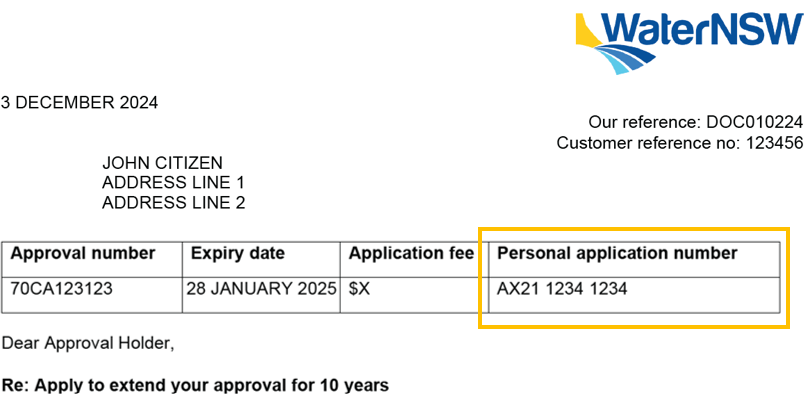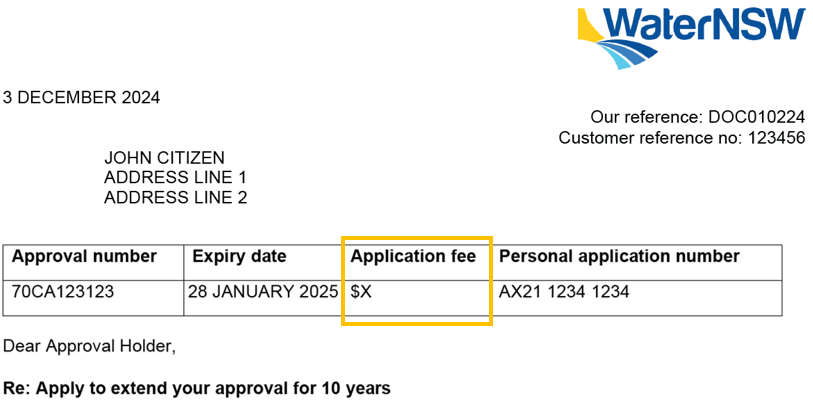Flood work approvals
Information about flood work approvals
Report a hazard - phone: 1800 061 069
WaterNSW head office
1PSQ, Level 14, 169 Macquarie Street Parramatta, NSW 2150
Contact us:
P: 1300 662 077
E: enquiries@waternsw.com.au
Postal address
WaterNSW
PO Box 398, Parramatta, NSW 2124
Locations and appointments
View offices or make a booking >
Warragamba Dam visitor centre
P: 02 4774 4433
Need an interpreter?
需要口譯員嗎?
Cần một thông dịch viên?
Necesitas un intérprete?
Hai bisogno di un interprete?
![]() Customers are encouraged to book an appointment with us to discuss flood work enquiries.
Customers are encouraged to book an appointment with us to discuss flood work enquiries.
A flood work refers to a work (such as a barrage, causeway, cutting or embankment) that is:
Approvals for a flood work are governed by floodplain management plans (FMPs) which specify the types of flood work that may be constructed within a management zone. Not all localities across NSW are governed by FMPs.
FMPs have been prepared for five valleys in Northern NSW, and work is now underway on replacement FMPs for the Southern Murray–Darling Basin.
Step 1: Pre-application meeting
To start the process of applying for a flood work approval, WaterNSW recommend all applicants to book a pre-application meeting. During the pre-application meeting, WaterNSW will discuss the details of the proposed application with you (and/or your consultant) and provide general advice in relation to the assessment process.
WaterNSW can also assist you in checking the provisions of the applicable floodplain management plan (FMP). Where no FMP exists, WaterNSW can assist you to understand the requirements within the Technical Guideline for flood work applications in areas with no FMP.
Book a pre-application meeting with WaterNSW. You can schedule a pre-application meeting by indicating your preferred date/s on the Request for a flood work pre-application meeting form (PDF, 251.82 KB) or by booking a meeting online and selecting the 'flood work'. If booking online, please ensure the completed pre-application meeting form is completed and emailed to WaterNSW as the information you provide on this form will allow us to fully understand and discuss your new or existing flood work.
What to expect at the pre-application meeting?
WaterNSW will discuss your proposal with you, together with the provisions of the applicable floodplain management plan (FMP). Where no FMP exists, WaterNSW can assist you to understand the requirements within the Technical Guideline for flood work applications in areas with no FMP.
Following this meeting, should a flood study (hydraulic modelling report) be required, WaterNSW will provide you with the required inflow data to facilitate completion of a modelling report. You may then be required to engage a certified Hydraulic Modeller to complete a report and submit this to WaterNSW with your flood work approval application.
What is a flood study?
A flood study may be requested if you want to apply to construct and use a flood work in a management zone that requires hydraulic impact assessment as determined by the relevant FMP, or a floodwork located outside of an FMP area but still within a floodplain.
If a flood study is required, it must be prepared by a suitably qualified person and address the following:
Step 2: Complete your application
Step 3: WaterNSW receives the application
WaterNSW will have any flood study provided independently assessed, and this assessment will be based on the flood study submitted with the application.
WaterNSW will determine whether to grant this application with the appropriate conditions or refuse it. Applicants will be advised in writing of the determination and, if granted, a flood work approval will be issued.
Step 4: If approval is granted
A flood work approval allows you to construct and use a flood work at the specified location as authorised by the approval.
What do you need to do?
Note: It is an offence under the WMA to contravene a term or condition of an approval. The Natural Resources Access Regulator (NRAR) is responsible for compliance with water law in NSW, including ensuring compliance with conditions on water access licenses (WALs) and approvals.
![]() Visit the NSW Public Water Register for information on flood work approvals granted by WaterNSW including conditions and approvals in progress.
Visit the NSW Public Water Register for information on flood work approvals granted by WaterNSW including conditions and approvals in progress.
Letters to approval holders notifying them about applying to extend an approval are posted by WaterNSW before the expiry date of the approval.
The letter notifying you to apply to extend a flood work approval includes a personal application number for you to use our Water Applications Online service to apply and pay online.
If your notification letter does not include this number you will need to fill in the hard copy application form posted to you with your notification letter.
Please note: Approval holders are responsible for ensuring their approvals remain valid and up to date. Failure to do so may result in late fees.
Learn how-to apply to extend your approval through WAO as a single holder (PDF, 1416.56 KB), or as a co-holder (PDF, 1639.03 KB).
For more information, please refer to our Frequently Asked Questions - Extend your approval (PDF, 126.1 KB)
Steps to extend your approval once you receive your notification letter
1. Apply to extend the duration of your approval before the expiry date. You can do this by using our Water Applications Online service and clicking on 'Visit Water Applications Online’. Then select 'Start new application’ and then select ‘Extend an approval’. When requested enter the personal application number (found on your letter).

Please note: If your letter does not contain a personal application number, you will need to fill out the hard copy application form posted to you with your letter.
2. Pay the application fee. For details of the application fee please visit our Applications and fees webpage. If you do not make this payment by your expiry date, a late application fee will apply.

Alternatively, if you no longer require your approval, please contact us on 1300 662 077.
Flood study requirement for flood work applications in management Zone C or CU
Flood work approvals help to manage water on floodplains. Approvals for a flood work are governed by floodplain management plans (FMPs) and their rules, which specify the types of flood work that may be constructed within that management zone.
Applicants for flood work approvals may be required to submit a flood study report to demonstrate that a flood work meets the criteria as outlined in the plan.
FMPs in the Northern Murray-Darling Basin do not include a specific requirement for a flood study to be completed as part of the assessment and determination of applications for flood works in management zone C or CU.
In relation to management Zone C or CU, flood studies will be required in Zone C or CU where:
Floodplain management plan spatial data
Floodplain boundary, management zones and ecological assets - for the northern valleys is now published on The Central Resource for Sharing and Enabling Environmental Data in NSW (SEED) and the NSW DCCEEW interactive map.
The data is published as a map service, rather than downloadable shapefiles or geodatabases.
For instructions on how to add ArcGIS Server map services, refer to the following ESRI instructions. This is helpful for landholders or their consultants who want to view the data in ArcMap or ArcGIS PRO.
Guidelines for flood work applications in areas without a floodplain management plan
There are many areas across NSW where there are no existing floodplain management plans (FMP). For these areas, a Technical guideline for flood work applications in areas without a FMP is available.
Floodplain management planning process
Please find further information on how floodplain management plans work, how they are prepared and the process of community consultation on the NSW Department of Climate Change, Energy, the Environment and Water's website.
How are applications for historic (existing) unapproved flood works assessed?
Applications for approval are assessed in accordance with the regulatory framework and governing rules in force at the time the application is determined. The rules or regulations that applied when the works were originally constructed, or when the application was lodged, are not considered in the assessment process.

Subscribe to receive a weekly email of recent advertised application listings including flood work applications that require advertisement.
![]()
Application forms
Guides and FAQs
Fact sheets
WaterNSW acknowledges the traditional custodians of the lands and waters on which we work and pay our respects to all elders past, present and emerging. Learn more